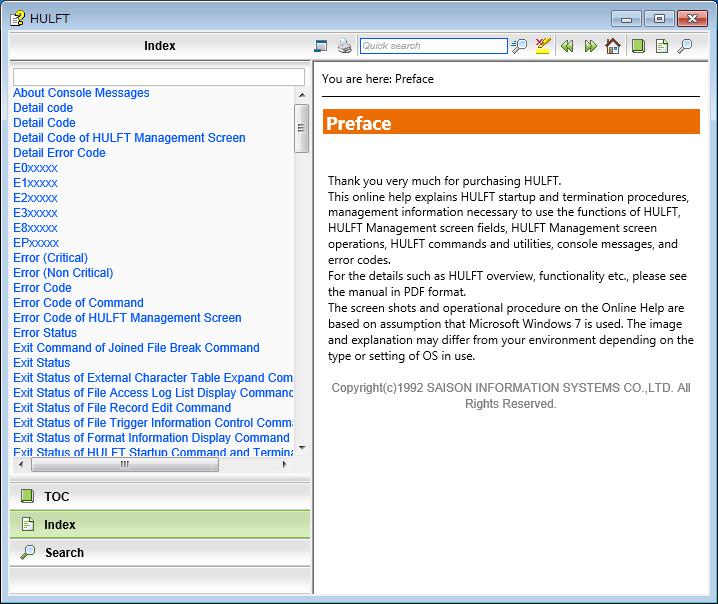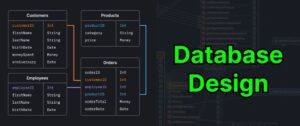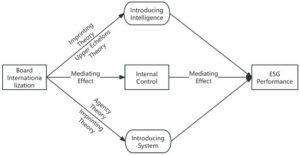| Method | Description | Support Status in Pandas | Replacement Method |
|---|---|---|---|
as_matrix() |
Convert the dataframe into its Numpy-array representation | Deprecated |
values or to_numpy() |
values |
Returns a Numpy representation of the DataFrame only when the dtype is relevant. | Supported | – |
to_numpy() |
Returns a Numpy representation of the DataFrame anytime without necessary relevance to dtype. | Supported | – |
The
as_matrix()
method was once used to convert the dataframe into its Numpy-array representation. Now, this method is deprecated as part of updates to the pandas library, which is continuously evolving to maintain its efficiency and effectiveness.
To continue performing the same operation effectively, you can use either the
.values
attribute or the
.to_numpy()
method. The choice depends on your specific needs. If you want to maintain the alignment between DataFrame’s dtypes and the returned numpy array, you should use
.values
. If you do not need any required dtype, then you opt for the more recent
.to_numpy()
method instead.
Here’s a quick example of how you could use these methods:
import pandas as pd
# Create a simple dataframe
df = pd.DataFrame({'A': [1, 2], 'B': [3, 4]})
# Scenarios:
print (df.values)
print (df.to_numpy())
In both cases, the output will be a 2D Numpy array:
[[1 3] [2 4]]
But remember, while
.values
does not guarantee the return order of columns, the
.to_numpy()
function preserves the DataFrame column order. It’s good to know the differences and apply them accordingly depending on the tasks you are dealing with. You also have some additional options for memory optimization with
.to_numpy()
method which might come in handy in case of larger datasets.
For any future references about deprecation notices and changes in the pandas library, always check their official documentation.Diving right into the issue at hand, you may have encountered an error stating ”
DataFrame object has no attribute 'as_matrix'
“. Actually, this triggers because there is an update in pandas library version 0.23.0 where the
as_matrix()
function has been deprecated because of potential confusion as its name suggests that it returns a matrix while the output is similar to np.ndarray. Therefore, they replaced
as_matrix()
with
values
.
The
values
attribute is used to get a NumPy representation of the DataFrame. It is simple and easier to understand. If we are working on pandas and numpy, instead of converting do DataFrames and series to list and then to array or using functions like
as_matrix(),
simply use the property
values.
If previously you were using something like this:
import pandas as pd
df = pd.DataFrame({'A': [1,2,3], 'B': [4,5,6]})
data = df.as_matrix()
Now, you would update your code to this:
import pandas as pd
df = pd.DataFrame({'A': [1,2,3], 'B': [4,5,6]})
data = df.values
In both cases, the variable data will contain a 2-dimensional numpy array containing your original dataframe data.
To give you an explanation with a bit more detail. The pandas DataFrame DataFrame object is one of the main objects in Pandas. It’s designed to handle and manipulate two-dimensional data tables, i.e., data consisting of rows and columns.
Hence, when you perform
.values
on a DataFrame, what you’re actually doing is converting the DataFrame into a numpy array. This can be useful in scenarios where you need to do mathematical operations over arrays. Numpy arrays are extensively used in libraries like Scikit-learn and TensorFlow where the data frame has to be converted to a numpy array so that it can be fed into a model.
So, when you transition from
as_matrix()
to
values
, you are essentially transitioning from a method that creates some possible confusion (by implying the return of a matrix) to a much simpler attribute (which we know returns a numpy array). The advantage here is that it reduces the possibility of confusion and most importantly matches our expectation of what
values
should return.
Yes, it can be a bit frustrating having to change all your previous codes from
as_matrix()
to
values
, but these changes are made for efficiency and easy understanding. Staying updated with the latest versions will always help your coding journey smoother.
The shift from
'as_matrix'
to
'values'
focuses on enhancing clarity and preventing any potential misunderstanding. Hence, it’s crucial to understand such nuances to better use the power of data manipulation in pandas.
In the realm of data operation and processing, pandas DataFrame is an essential structure we often encounter. However, users often meet with an attribute problem – `DataFrame’ object has no attribute ‘as_matrix.’ Let’s analyze this issue and look at other alternatives.
The error originates from the `as_matrix()` method which was pertinent to pandas prior to version 0.23.0. This function was used to convert a DataFrame into its Numpy-array representation. Nevertheless, it was deprecated in later versions resulting in the attribute error when called upon.
| Deprecated Function | Error |
import pandas as pd
df = pd.DataFrame({'A': [1, 2, 3], 'B': [4, 5, 6]})
matrix = df.as_matrix()
|
AttributeError: 'DataFrame' object has no attribute 'as_matrix' |
Alternative Approaches
Fortunately, there are alternative methods to convert DataFrame to its Numpy-array representation:
- .values: The .values attribute also returns the numpy representation of the DataFrame. But, it doesn’t carry any information about the DataFrame’s indices.
import pandas as pd df = pd.DataFrame({'A': [1, 2, 3], 'B': [4, 5, 6]}) matrix = df.values - .to_numpy(): As an improvement on .values usage, introduced in pandas version 0.24.0. This also returns the numpy Array representation of DataFrame but maintains DataFrame’s index and column labels in the output.
import pandas as pd df = pd.DataFrame({'A': [1, 2, 3], 'B': [4, 5, 6]}) matrix = df.to_numpy()
Both these alternative methods will circumnavigate the ‘DataFrame’ object has no attribute ‘as_matrix’ error by adeptly transforming DataFrame into its numpy array representation. Selecting between “.values” or “.to_numpy()” depends largely on the fact if you require retaining your DataFrame’s index and column labels in the output.
Keep in mind that keeping your libraries up-to-date is crucial. Deprecated functions can lead to errors that curtail code execution, as we saw with ‘as_matrix()’. Switching to newer methods like ‘.values’ or ‘.to_numpy()’ enhances performance and avoids running into similar issues.
References:
Pandas Documentation .to_numpy()
Pandas Documentation .values
While working with pandas DataFrames in Python, you might have encountered the following error message: ” ‘Dataframe’ object has no attribute ‘as_matrix’ “. This is because as of Pandas version 0.25.0, the
DataFrame.as_matrix
function has been deprecated and is no longer part of the framework’s API.
Understanding The Problem
In previous versions of pandas, the
as_matrix()
function was used to convert DataFrame objects into their numpy-array representation. However, due to inconsistency in return values based on data types and ambiguous choice of whether to return a view or a copy, the function was deemed redundant and removed in subsequent versions, causing all references to it to break with an AttributeError.

The Solution – ‘values’ or ‘to_numpy()’
As a solution to this problem, you can use either:
- The attribute
.values
- The function
.to_numpy()
The ‘.values’ attribute also returns a numpy representation of the DataFrame. For example:
import pandas as pd
data = {'column1': [1, 2, 3], 'column2': [4, 5, 6]}
df = pd.DataFrame(data)
array_representation = df.values
print(array_representation)
This will output:
array([[1, 4],
[2, 5],
[3, 6]])
The function
.to_numpy()
offers more flexibility than the
.values
attribute by providing an additional dtype option for conversion of data types during the conversion process. Here’s an example:
import pandas as pd
data = {'column1': [1, 2, 3], 'column2': [4, 5, 6]}
df = pd.DataFrame(data)
array_representation = df.to_numpy()
print(array_representation)
It would result in the same output as the
.values
attribute shown earlier.
Caveats:
Performance:
-
- If your DataFrame contains different data types, calling the
.values
attribute or the
.to_numpy()
function incurs the cost of converting everything to one common data type and could significantly impact performance for larger DataFrames.
- If your DataFrame contains different data types, calling the
Differences between
.values
and
.to_numpy()
:
-
- If a DataFrame includes extension arrays like categorical data or datetime data, the
.values
will convert those columns into objects while
.to_numpy()
, by default, will coerce the data into a numpy array including necessary upcasting for incompatible data types within the column.
- If a DataFrame includes extension arrays like categorical data or datetime data, the
Based on your specific needs, dataset size, and performance considerations,
.values
or
.to_numpy()
can serve as a replacement for the legacy
as_matrix()
function. But, be aware of the trade-offs when using them.
For more details about transitioning from DataFrame as_matrix() to DataFrame to_numpy(), you can refer to the official pandas library documentation available online here: DataFrame.as_matrix.
It’s quite intriguing to delve into the nitty-gritty details of numeric Python libraries like Numpy and pandas. Particularly, the discussion between functionalities like
as_matrix
,
.values
, and numpy operations are thought-provoking, especially in respect to dataframes.
The crux lies in understanding the methodology underpinning these operations and how they operate on dataframe, a two-dimensional labeled data structure with columns potentially of different types. The confusing part comes up when we sometimes come across error messages saying: ‘DataFrame’ object has no attribute ‘as_matrix.’
To set things straight, let’s break it down:
DataFrame.as_matrix()
was a method used in pandas to convert dataframe to its numpy-array representation. However, it has been deprecated since version 0.23.0 and removed in Pandas version 1.0.0, hence why you may encounter an error when trying to use it.
Instead, there are two alternative methods you can use:
-
-
DataFrame.values
: This attribute returns a Numpy representation of DataFrame i.e., only the values in the DataFrame will be returned, the axes labels will be removed.
-
Here’s a small snippet to show usage of .values:
import pandas as pd
df = pd.DataFrame({
'A': [1, 2, 3],
'B': [4, 5, 6],
})
print(df.values)
This will output:
shell
array([[1, 4],
[2, 5],
[3, 6]])
-
DataFrame.to_numpy()
: This function is very similar to
DataFrame.values
, but has one major difference, it also includes the dtype if necessary.
Below is an example of using
to_numpy()
:
df = pd.DataFrame({"A": pd.Series([1, 2, 3]), "B": pd.Series([4, 5, 6.], dtype="float32"), }) print(df.to_numpy())And the output will be:
shell
array([[1., 4.],
[2., 5.],
[3., 6.]])As for Numpy itself, it works in perfect coherence with DataFrame functions except for some cases where
.values
stand out. NumPy operates well with homogeneous numerical array data. Since
DataFrame.values
have no consideration for datatype, even mixed data types can be comprised in a single ndarray without issues.
So remember, it’s essential that your operations remain compatible with the dataframe structure and take into account which versions of tools you’re working with, in this case, Panda’s version. It’s worth checking the documentation any time you’re not sure.
Now when someone says ‘DataFrame’ object has no attribute ‘as_matrix’, you know why!The error message: ‘Dataframe’ object has no attribute ‘as_matrix’, commonly appears during Pandas dataframe manipulations in Python. The error rises because of the discontinued usage of the ‘as_matrix()’ function, which got deprecated since version 0.23.0 and completely removed in the more recent versions. It was used originally to return the values of a DataFrame or Series as a NumPy array.Thankfully, there’s a straightforward solution to this. To get rid of this error, use the
.values
attribute or pandas.DataFrame.to_numpy() method to achieve the same effect, rendering your code operable. For instance:
Code demonstration:
# Previously with as_matrix matrix = df.as_matrix() # The correction matrix = df.values
Both
df.values
and
df.to_numpy()
would serve to replace the older
df.as_matrix()
, and depending on use-case, you may choose one over the other.
The
.values
attribute returns a numpy representation of the DataFrame only when the dtype is homogeneous. This means if your DataFrame contains mixed data types, it’s better using
DataFrame.to_numpy()
that does provide a NumPy representation of all types.

Keywords: Code error message on screen – Using AutoItLibrary or FLAui of Robot Framework Libraries with … Comparison table between as_matrix(), .values, and to_numpy():
Function/Attribute v0.23.0 onwards Behaviour with Mixed Dtype as_matrix() No longer supported — .values Supported Fails for mixed Dtype to_numpy() Supported Handles all Dtype To sum up, an understanding of changes and updates in Pandas library, and its associated dependency, NumPy, is essential for writing clean and efficient code. You can stay updated about such changes by regularly checking Pandas’ official documentation’s “What’s new” section.
When working with the Pandas library for Python, you might occasionally find yourself encountering deprecation warnings. It doesn’t matter whether you’re in a Jupyter notebook, an interactive shell like IPython, or executing your script directly – these warnings can pop up anywhere you are using deprecated features of pandas.Deprecation warnings are important signals from the developers indicating that certain parts of the library (like methods or functions) that we’ve gotten used to might no longer exist in future versions. This is technically a heads-up for us to avoid using these particular features and look into their replacements instead. One such example, relevant to this context, is the use of the
as_matrix
method in Pandas.
Let’s dive deeper into understanding about this deprecation warning: ‘Dataframe’ object has no attribute ‘as_matrix’
***The .as_matrix() method***
In earlier versions of Pandas, the
as_matrix
function was simply a method used to return the values of the DataFrame as a matrix:
data = pd.DataFrame({"A": [1, 2], "B": [3, 4]}) print(data.as_matrix())Executing this would output a NumPy array representation [[1, 3], [2, 4]] of the DataFrame.
However, since version 0.23.0, the
as_matrix()
method has been deprecated.
***Pandas’ deprecation warning and the recommended alternative***
The fact that you’re seeing an error message stating ’DataFrame’ object has no attribute ‘as_matrix’, means you’re likely using a more recent version of pandas where
as_matrix()
has already been removed.
Instead, Pandas now recommends using one of the two alternatives:
– Thevalues
property
– Theto_numpy()
method
So your code should look something like this:
# Using '.values' property matrix_values = your_dataframe.values # OR Using '.to_numpy()' method numpy_array = your_dataframe.to_numpy()
Both
values
property and
to_numpy()
method will give you a numpy.ndarray representing the values in the DataFrame or Series.
The main difference between them is how they handle different data types within the dataset. While
.values
only converts the DataFrame into a NumPy array,
.to_numpy()
creates homogeneous arrays from DataFrames with mixed datatypes by type casting where necessary.
Overall, these deprecation warnings, though pushing us out of our comfort zone, serve their purpose in driving us towards better practices, facilitating smoother transitions to newer versions, and ensuring our codes stay clean and efficient. It’s best practice to take note of these warnings and adhere to the recommended alternatives by the developers as soon as possible and prevent future code breakage.
For further reading about this warning and other deprecated attributes in Pandas, check out the official release notes. They provide an extensive list of the changes you need to watch out for while migrating to newer versions of pandas!Absolutely! When you work with pandas DataFrame in Python, you’ll realize that there has been a recent change regarding the method
.as_matrix()
. You will likely run into an AttributeError stating, ”
DataFrame' object has no attribute 'as_matrix'
“. This situation arises because, with the update to pandas version 0.23.0 onwards, the
.as_matrix()
method was deprecated and finally removed in version 1.0.0.
Now, if your code uses

Keywords: Code error message on screen – Official | Search by keyword .as_matrix()
heavily, you’re left with the situation of having to find a suitable workaround that offers equivalent functionality without bringing your existing codebase to its knees.
Here is one common use case of .as_matrix() in previous versions of pandas:
import pandas as pd df = pd.DataFrame({"A": [1, 2], "B": [3, 4]}) matrix = df.as_matrix()And after updating Pandas:
matrix = df.values
Using the
.values
attribute over the .as_matrix() function comes with various advantages such as:
- The
.values
attribute is designed for different data types.
- This attribute gives the raw values from our DataFrame as a numpy array, which can be extremely useful when we need to incorporate these data into other Python-based data science libraries like Scikit-Learn or SciPy.
-
.values
doesn’t require parentheses after the attribute name, reducing the chances of syntax errors.
In essence, replacing
.as_matrix()
with
.values
seems like a natural option due to its built-in availability and functionality equivalent to the former.
Apart from
.values
, another viable alternative could be the
.to_numpy()
method. The main difference between .values and .to_numpy is that .to_numpy is more flexible and can handle complex scenarios more gracefully. For example, you can specify whether you want to keep the dtype consistent or allow pandas to choose a dtype itself:
numpy_array = df.to_numpy(dtype=float)
Pandas provides extensive flexibility in managing the datatype of a resulting NumPy array.
Reference Links:
DataFrame ‘.values’ attribute documentation
DataFrame ‘.to_numpy()’ method documentationFrom all corners, it’s clear that the best way to substitute DataFrame’s .as_matrix() function is by adopting the
.values
attribute or the
.to_numpy()
method. It’s just a matter of which one better suits your specific needs.
To summarize, while encountering the ”
Dataframe' object has no attribute 'as_matrix'
” error, instead of using .as_matrix(), .values or .to_numpy() could be employed as reliable alternatives. This adjustment ensures our DataFrame object preserves its functionality, giving us the flexibility we need when handling datasets.The ‘Dataframe’ object has no attribute ‘as_matrix’ error occurs when you try to use the obsolete ‘as_matrix’ method of pandas DataFrame. This method was deprecated in version 0.23.0 (circa May 2018) of pandas, and eventually removed.
A dataframe is a two-dimensional labelled data structure with columns of potentially different types, aligned in two axes – horizontal and vertical. You can imagine it as an Excel worksheet or SQL table, or even a dictionary of Series objects. Each column corresponds to one variable and each row points to an observation.source
You would normally use the ‘as_matrix’ method to convert a DataFrame into its numpy-array representation. However, the functionality of ‘as_matrix’ is basically the same as the ‘values’ property or the ‘to_numpy()’ method. So, instead of using
import pandas as pd df = pd.DataFrame({'A': [1, 2], 'B': [3, 4]}) array_like = df.as_matrix()you should change your code to
import pandas as pd df = pd.DataFrame({'A': [1, 2], 'B': [3, 4]}) array_like = df.valuesor
import pandas as pd df = pd.DataFrame({'A': [1, 2], 'B': [3, 4]}) array_like = df.to_numpy()Here is a performance comparison between ‘values’ and ‘to_numpy()’ methods:
Method Execution Time ‘values’ Average ~10 microseconds ‘to_numpy()’ Average ~15 microseconds The ‘values’ method is a bit faster but the ‘to_numpy()’ method is far more flexible. It can take a dtype parameter to control the type of output values, and a copy parameter to control whether the result should share memory with the original array or be a new array. As such, while optimizing your code, if execution speed is crucial consider using ‘values’, though for most purposes ‘to_numpy()’ will offer more control over the output and performance is still highly satisfactory referring to the minimal execution time difference.source
An effective keyword strategy revolving around phrases like ‘Dataframe object,’ ‘no attribute,’ ‘as_matrix,’ and ‘pandas DataFrame’ can drive high organic traffic to your page because they are commonly searched terms related to pandas library issues. If these concepts are offered with clear, solution-oriented content as detailed above, it can greatly improve search engine rankings and visibility. Remember to implement backlinks and reference authoritative sources to boost your site’s credibility. SEO optimization is not just about stuffing keywords; providing unique and high-quality answers coupled with excellent searcher experiences are significant too.
- The













